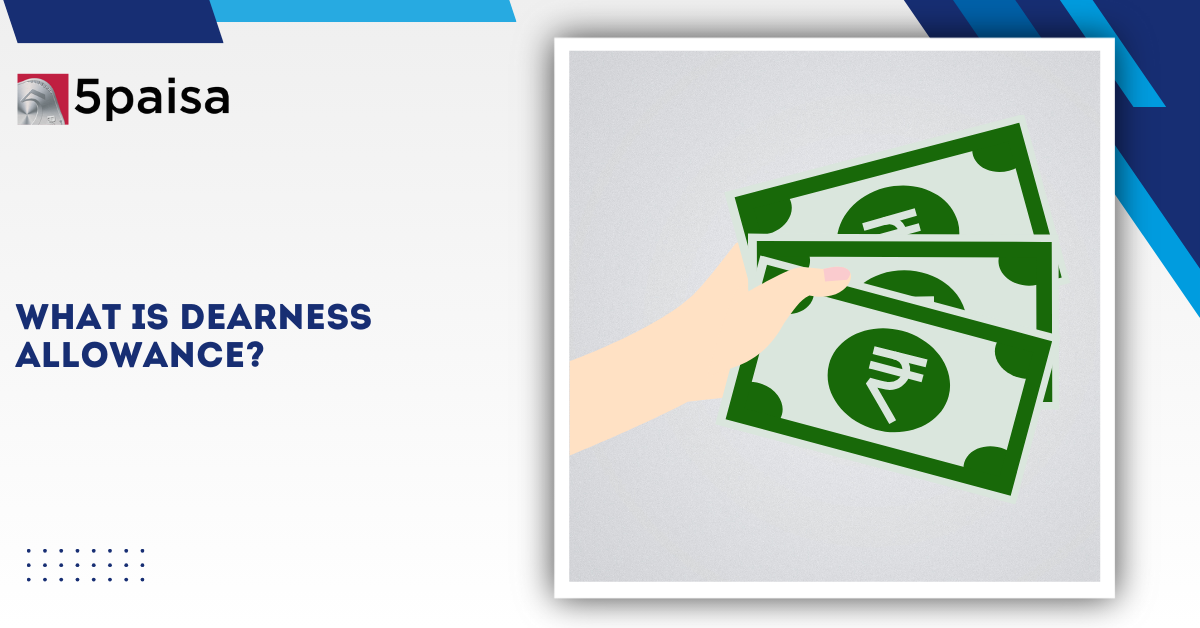Content
- What Is Dearness Allowance?
- Latest Changes in Dearness Allowance
- Calculation of Dearness Allowance
- What Factors Affect the Calculation of DA
- Differences in DA Across Various Sectors
- Role of Pay Commissions in DA Calculation
- Types of Dearness Allowance
- Importance of DA in Salary Structures
- Treatment of Dearness Allowance under Income Tax
- Difference Between DA and HRA
- Dearness Allowance Merger
- Conclusion
In today’s economic climate, where inflation constantly influences the cost of living, salary components like Dearness Allowance (DA) play a crucial role in ensuring financial stability for government employees and pensioners. Dearness Allowance is a cost-of-living adjustment provided by the government to compensate for the erosion in purchasing power due to rising prices. It is calculated as a fixed percentage of an employee’s basic salary and is revised periodically based on changes in the Consumer Price Index (CPI).
While it may seem like just another line item in a payslip, DA is a vital element that safeguards the standard of living of millions of employees across India. Whether you're a public sector worker, a retiree, or simply trying to understand salary structures better, knowing how DA works can give you deeper insights into your earnings, taxation, and economic resilience in the face of inflation.
More Articles to Explore
- Difference between NSDL and CDSL
- Lowest brokerage charges in India for online trading
- How to find your demat account number using PAN card
- What are bonus shares and how do they work?
- How to transfer shares from one demat account to another?
- What is BO ID?
- Open demat account without a PAN card - a complete guide
- What are DP charges?
- What is DP ID in a demat account
- How to transfer money from demat account to bank account
Disclaimer: Investment in securities market are subject to market risks, read all the related documents carefully before investing. For detailed disclaimer please Click here.
Frequently Asked Questions
States like Rajasthan, Madhya Pradesh, and Assam have recently announced a 4% hike in Dearness Allowance for government employees and pensioners, helping them cope with inflation and aligning with central government adjustments.
Yes, the DA amount can differ based on the employee’s work location—urban, semi-urban, or rural—to reflect variations in living costs and inflation rates in different geographical regions.
Dearness Allowance is revised twice a year, typically in January and July, based on changes in the Consumer Price Index (CPI) to help offset the effects of inflation on employees’ real income.
DA is specifically meant to adjust income for inflation, while other allowances like HRA or transport allowance are given for fixed purposes and do not depend on cost-of-living changes.
Basic pay is a fixed component of salary, while DA is a variable amount added on top to offset inflation. DA is calculated as a percentage of basic pay and revised periodically.
No, DA is not part of the basic salary. It is a separate salary component calculated as a percentage of basic pay and listed separately in salary slips and income statements.
DA is generally considered for merger with basic salary when it exceeds 50%, though this depends on government decisions and pay commission recommendations at the time.
Dearness Allowance is granted to central and state government employees, pensioners, and public sector workers to help them maintain purchasing power amid rising inflation and increased living costs.
No, DA is not applicable to private sector employees by default. However, some companies may provide similar cost-of-living allowances based on internal compensation policies and inflation impact.
Yes, DA can vary depending on whether the employee is posted in an urban, semi-urban, or rural area, as local cost-of-living conditions influence the DA rate.
Dearness Allowance for pensioners and family pensioners is granted under government rules and pay commission frameworks, ensuring inflation-adjusted pension payments for retired public sector employees.
DA is typically revised twice a year—on January 1st and July 1st—based on CPI data to help government employees cope with changing inflation rates and maintain their real income.
DA may be merged into the basic salary when it crosses the 50% threshold, subject to government approval. This merger leads to permanent salary structure changes and higher retirement benefits.
Yes, Dearness Allowance is fully taxable. It is included in the total salary and taxed as per the applicable income tax slab under the Income Tax Act, 1961.
Yes, pensioners residing abroad are eligible for DA if they are not re-employed. However, those re-employed overseas may not receive DA depending on the rules of reemployment.
DA for pensioners is calculated based on their last drawn basic pension. Any changes in DA rates announced for employees are also applied to pensioners under the same pay commission.
Pensioners may receive DA during reemployment, but it is often limited by the salary of their new job and subject to conditions laid down by the reemploying authority.


